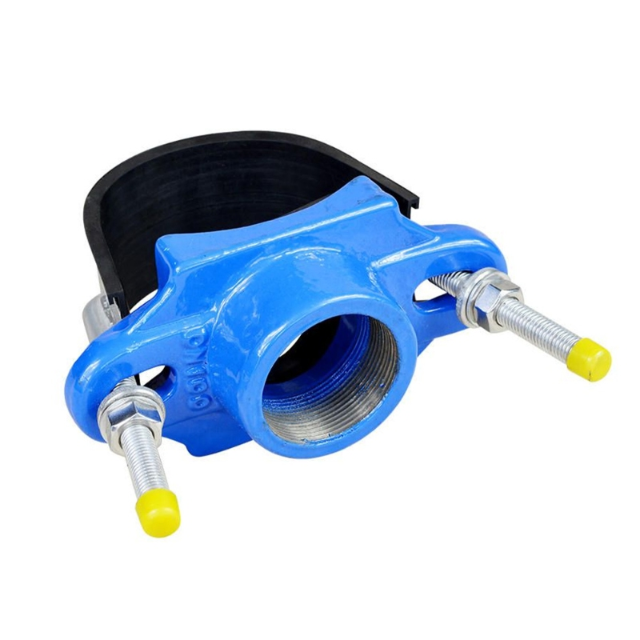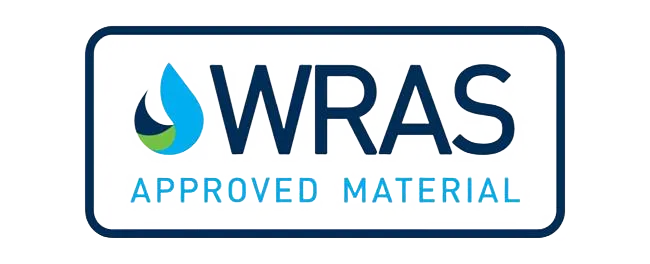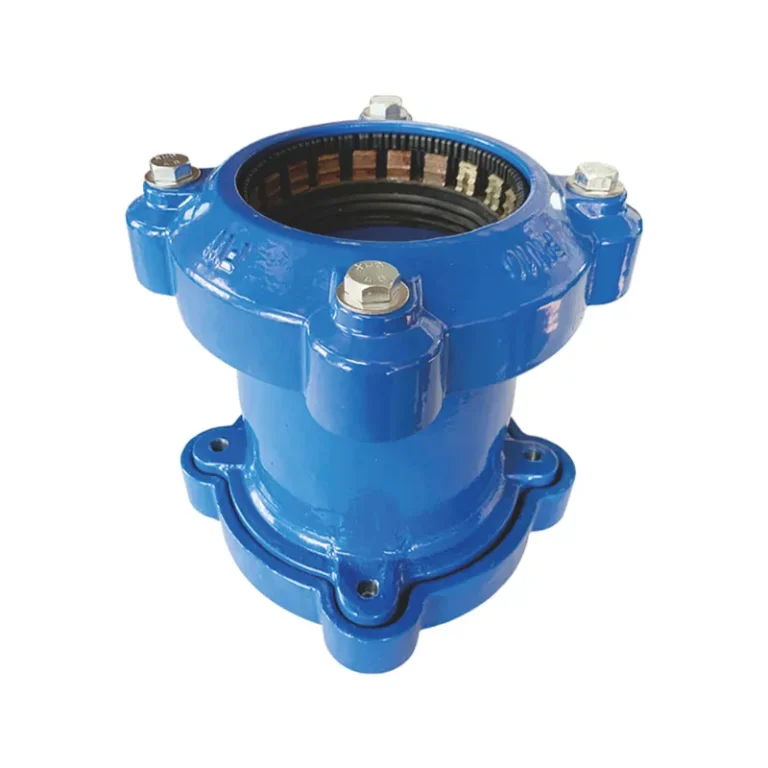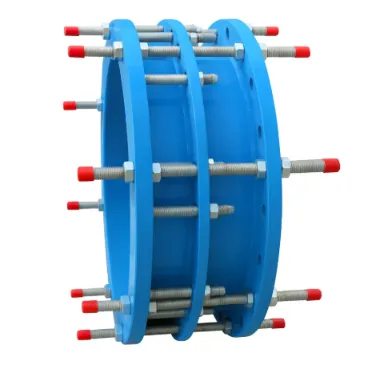
I sistemi idrici a volte richiedono riparazioni o nuove rami. Spegnere l'acqua può essere un fastidio. Ma con gli strumenti giusti, è possibile aggiungere connessioni o riparare tubazioni senza fermare il flusso. L'Universal Saddle Clamp lo rende possibile. Funziona su tubi di DI, PE, PVC e acciaio con poca interruzione. Prima di entrare nei passaggi, parliamo di scegliere un buon fornitore.
Articolazioni conflesse è un'azienda che produce sistemi flessibili di condotte. Hanno molta esperienza con progetti idrici e industriali. Le loro pinze e giunzioni sono resistenti, resistenti alla ruggine e soddisfano gli standard globali. La loro pagina “A proposito di noi” dice che non vendono solo prodotti, aiutano i clienti a capire le cose tecniche per risparmiare tempo e denaro. Se avete bisogno di consigli, il vostro pagina contatto è facile da usare. Questo approccio utile trasforma uno strumento complesso in una soluzione semplice per i problemi di tutti i giorni.
Perché l'installazione non stop è importante?
Mantenere l'acqua in flusso è molto importante. Fermare un'intera sezione di tubo può rovinare case, imprese o persino quartieri. Con una morsa universale per sela, è possibile aggiungere rami, contatori o rubinetti mentre il sistema rimane attivo, evitando spegni improvvisi. Inoltre mantiene il servizio stabile per gli utenti.
Come influenza la condizione del tubo l'installazione della pinza?
Lo stato dei tubi è fondamentale per una buona installazione. I vecchi tubi in acciaio zincato possono rugginire o indebolirsi dopo circa 20 anni. I tubi di rame, tuttavia, possono durare oltre 50 anni. Se vedi ruggine, fori o bassa pressione dell'acqua su tubi vecchi, una pinza può essere una soluzione rapida per perdite o rami. Ma spesso è temporaneo. I tubi DI o PVC più recenti, tuttavia, hanno superfici più lisce. Rendono più facile la sigillatura e durano più a lungo.
Cosa rende la morsa universale adatta per diversi tubi?
Questa pinza è speciale perché si adatta a molti tipi di tubi. A differenza dei raccordi più vecchi che funzionano solo con un materiale, la morsa da sella universale gestisce tubi duttili in ferro, acciaio e plastica. Segue gli standard EN1092, ANSI e ISO. Ciò lo rende ideale per sistemi idrici urbani o progetti di fabbrica.
Perché la forza materiale è importante?
Il corpo della pinza è solitamente fatto di ferro duttile (GGG50). Questo materiale è resistente e non si rompe facilmente, a differenza della ghisa fragile. Il ferro duttile ha punti rotondi di grafite, quindi si piega sotto pressione invece di crepare. Ciò è più sicuro per i sistemi idrici ad alta pressione. La pinza utilizza anche bulloni in acciaio inossidabile e guarnizioni EPDM. Resistono alla ruggine e resistono alle pressioni PN10 o PN16.
Come si prepara il tubo prima dell'installazione?
Preparare il tubo è fondamentale. È necessario una superficie pulita per la morsa per sigillare bene. Raschiare la ruggine, lo sporco o la scala dove andrà la pinza. Per i tubi vecchi con piccole perdite, pulire con attenzione e controllare la superficie. Anche piccoli pozzi possono causare problemi di tenuta.
Quali strumenti sono necessari?
IL UNIVERSAL SELLA CLAMP è facile da installare. Hai solo bisogno di una chiave o una chiave di base per stringere i bulloni. Non sono necessari strumenti sofisticati come saldatrici o taglieri. Questo è ideale per soluzioni rapide o lavori in luoghi con strumenti limitati.

Come viene installata la pinza su un tubo live?
In primo luogo, pulire la superficie del tubo. Quindi, posizionare le due metà della pinza intorno al tubo. Posizionare la guarnizione con attenzione sull'apertura del ramo. Serrare i bulloni in un modello incrociato per diffondere la pressione in modo uniforme. L'Universal Saddle Clamp ti consente di farlo mentre l'acqua continua a scorrere. Non è necessario spegnere tutto il sistema. Questo non è solo pratico, ma anche più sicuro. Evita shock di pressione o problemi con altre connessioni.
Come si fissano rami o accessori?
L'Universal Saddle Clamp rende l'aggiunta di cose come rubinetti, contatori d'acqua o tubazioni ramificate semplice. Per impostazioni più grandi, a Flangia della sella universale può contenere raccordi flangiati extra. Questa flessibilità significa che non è necessario tagliare o saldare. Ciò mantiene il tubo forte.
Quali sono le sfide comuni durante l'installazione?
Gli errori possono accadere, anche con una buona pinza. Se si stringono i bulloni in modo non uniforme, possono verificarsi perdite. Misurare il diametro del tubo sbagliato può causare una tenuta cattiva. In aree rugginose o umide, scegliere il materiale di guarnizione sbagliato può accorciare la vita della pinza. L'EPDM funziona bene per l'acqua potabile. NBR è migliore per oli o prodotti chimici.
Come si può prolungare la vita della pinza?
Controllare regolarmente la pinza per catturare le perdite in anticipo. Se i tubi sono in terreno umido o arrugginito, rivestimenti come l'eposside a legame di fusione aiutano molto. Ad esempio, i tubi in ferro duttile con rivestimento in cemento e rivestimento in polietilene resistono alla ruggine dell'acqua molto meglio della ghisa semplice. Scegliere il rivestimento giusto mantiene le pinze funzionanti per anni.
La morsa di sella universale è adatta per l'acqua potabile?
Sì, la pinza è approvata WRAS, quindi è sicura per l'acqua potabile. Funziona anche per l'acqua riciclata e le acque reflue. I bulloni in acciaio inossidabile, i rivestimenti epossidici e le guarnizioni di alta qualità mantengono l'acqua pulita. Per le linee idriche cittadine dove la qualità conta, questo rende la pinza una scelta intelligente.
Come bilanciare costi e prestazioni?
Le pinze di sella vengono a prezzi diversi. Ma quelli economici spesso falliscono più velocemente. Come dicono gli esperti, risparmiare un po 'ora può significare più grandi bollette di riparazione in seguito. Scegliendo pinze certificate con qualità comprovata, le sostituisci meno spesso. Ciò crea fiducia nella sicurezza del tuo sistema.
Domande frequenti
Q1: Può essere installato un morsetto di sella universale su vecchi tubi corrosi?
R: Sì, ma pulisci prima la superficie. Se la ruggine è cattiva, la pinza è solo una risoluzione a breve termine fino a sostituire il tubo.
Q2: Quale pressione può gestire una morsa universale?
A: I modelli standard funzionano per PN10 o PN16, buoni per la maggior parte dei sistemi idrici della città e della fabbrica.
Q3: Hai bisogno di strumenti speciali per installare la pinza?
R: No, solo chiavi o chiavi di base. Ciò rende il lavoro sul campo veloce e semplice.
Q4: La morsa universale della sella è sicura per i sistemi di acqua potabile?
R: Sì, l'approvazione WRAS significa che è sicura per l'acqua potabile, oltre ai sistemi riciclati e fognari.
Q5: Come puoi assicurarti che la pinza dure più a lungo?
A: Utilizzare rivestimenti a prova di ruggine, scegliere la guarnizione giusta e controllare regolarmente le perdite.











